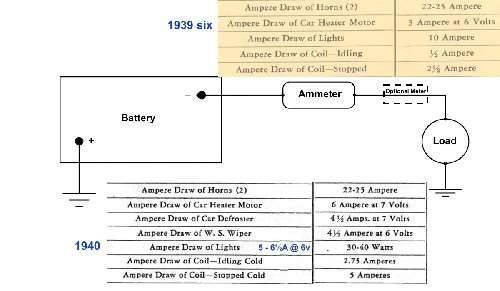|
Ammeter any good???
|
||||
|---|---|---|---|---|
|
Home away from home
|
In going through the instrumentation on my '39 Six, I have been trying to get everything back to original and functioning. My last hurdle is the ammeter gauge. The one in the car when I bought it, is 'pinned' in the overcharge position regardless of key on/off. I found a cluster (gas/ammeter)for a 1940 online and, although the face is ever-so-slightly different than the '39, the internal gauges themselves look the same. The 'new' ammeter centers nicely on zero charge and seems to move freely if the gauge is gently shaken. My question is: how can I test it to see if it is functioning before going to all the trouble of installing it?? I am somewhat 'DC challenged' but I have a 6 volt battery and a 10 amp 6-volt charger on my work bench. Is it possible to wire this up to show the charger's input on the gauge without hurting it? I am PRESUMING (dangerously) that the cluster itself must be positively grounded to the battery and then possibly a loop from negative to both terminals on the gauge, with the charger in the circuit??? Also, one of the terminals has a red '6' on it. Am I correct in assuming that would be the negative (hot side)??? I know there are some electrical geniuses out there who might chuckle at the simplicity of this, but I'd sure appreciate a 'how-to'. Many thanks
Posted on: 2017/4/7 11:13
|
|||
|
'If you think you can, or you think you can't - you're right!' Henry Ford.
1939 Packard Six, Model 1700 |
||||
|
||||

Hello and welcome to Packard Motor Car Information! If you're new here, please register for a free account.
 (67.78 KB)
(67.78 KB)







